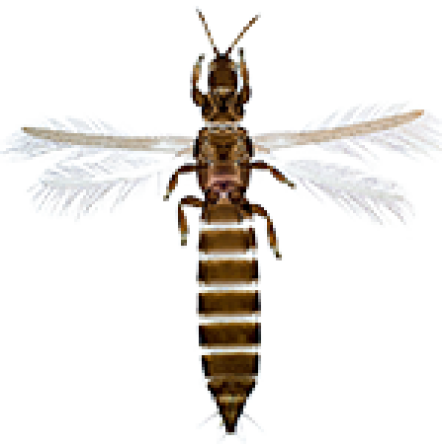

Thrips
The thrips (Thysanoptera) are an order of insects. There are about 4500 species worldwide of which about 500 are found in Central Europe. They are characterized by the tiny body size and the adults by wings covered with fringes. The body is slender and flattened from the ventral and dorsal sides. The wings are folded along the back when at rest.
Behaviour:
Eggs are laid near leaf veins. Development takes place over two larval stages, first as plant sap suckers on leaves, later in the substrate or soil. The subsequent two pupal stages do not suck. Infestation with spider mites promotes infestation with flower thrips. Development is fastest at 30 °C (approx. 11 days from egg to egg).
Damage/illnesses:
The Western flower thrips sucks out cells of tender tissue of leaves, flowers and also fruits. As a result, spots and droplets of excrement are visible on leaves, and discoloration is visible on flowers. As they continue to grow, the plant parts are then deformed and show corking. Some flowers no longer open at all.
Control:
For potted plants in households, flying thrips can be caught away by small adhesive traps. It is important to apply the adhesive traps at an early stage as a preventive measure, before mass infestations occur. Temporary cooling of potted plants also reduces infestation.
Prophylaxis:
Use Neocid Expert Yellow Trap for infestation detection.




